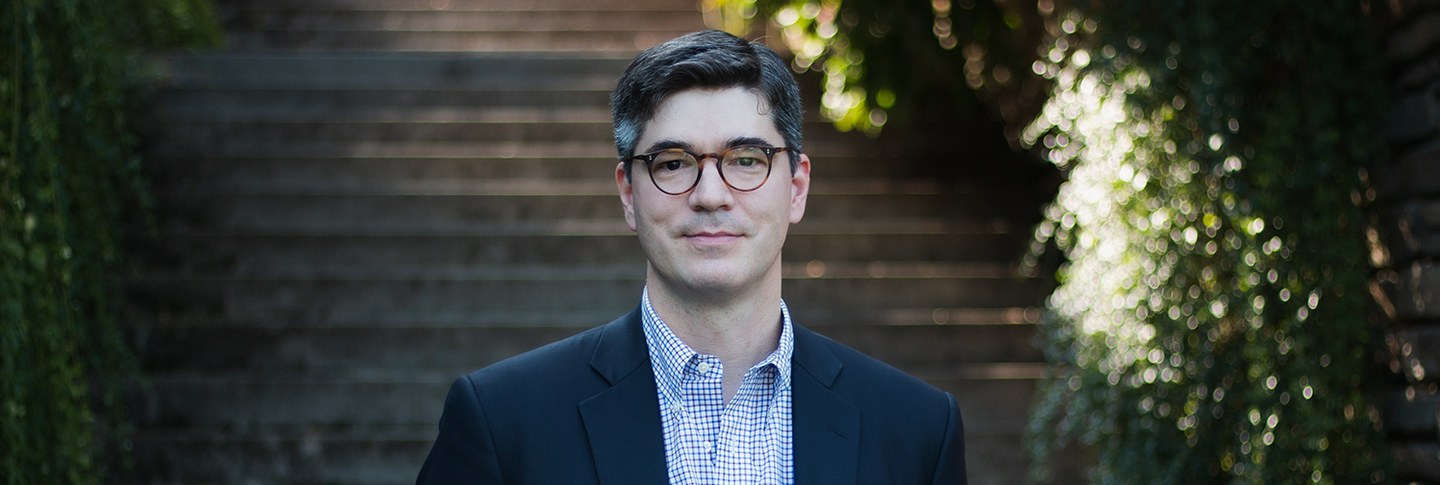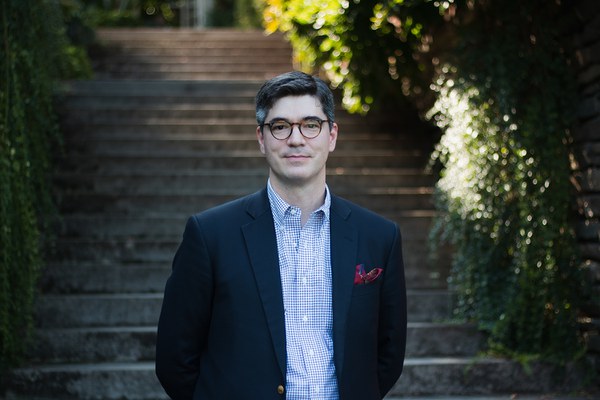Warren Woodfin, an associate professor of art and history at Queens College, CUNY, was a 2019–2020 fellow in Byzantine Studies. His recent research report, “Between Image and Sacrament: The Problem of Liturgical ‘Realism’ in Byzantine Art,” investigated the relationship between the actual Byzantine liturgy of the Eucharist and its representations in visual form.
Q&A with Warren Woodfin
How did Byzantine images of the Orthodox liturgy draw parallels between heaven and earth?
I’m using “liturgy” in the Orthodox way, as a shorthand for the mass: the ritual of holy communion where scriptures are read, prayers made, and bread and wine transformed into the body and blood of Christ. There are liturgies of marriage, burial, and more, but I am focusing on the liturgy of the Eucharist.
For example, consider the sixth-century Riha flabellum in the Dumbarton Oaks collection. We know from writings as early as the fourth century that fans were in use in the liturgy for a very practical purpose: to keep flies away. You don’t want flies in the blood of Christ. The flabellum is decorated with one of the biblical cherubim and has a scalloped edge engraved to look like peacock feathers. The practical action of waving a fan over bread and wine has become associated with the waving wings of angelic creatures around the throne of God.
So already in the sixth century, there is an idea that the liturgy happening at the altar of the church is somehow connected to the worship of the angels eternally in heaven. It’s an extension of or parallel to heaven. Exactly how that relation works is what I'm analyzing in my project.
In later Byzantine centuries, fewer and fewer people apart from the clergy regularly partook in the bread and the wine. So my project also looks at the way the image of the Eucharist potentially becomes a kind of substitute for seeing and participating in the actual sacrament of communion.
How did church decorations depicting the liturgy change over time?
Another object at Dumbarton Oaks, the Riha paten, shows the Communion of the Apostles. Now we use this term “Communion of the Apostles” in Byzantine art history as though it’s completely normal. But it’s an ahistorical image, which hardly even exists in Western medieval art. Christ appears twice—once with the chalice and once distributing the bread—with six apostles on either side, including Saint Paul, who was not among the 12 apostles until after Jesus ascended into heaven. Christ is standing in what is clearly the sanctuary of a church as it would have been arranged in the sixth century.
What’s fascinating is this daring association of the liturgy of the church with something Christ is doing in . . . perhaps heaven? That would contradict what most theologians taught, that you won’t need communion in heaven. The image asserts that what is happening at the church’s altar with the human priest is really being carried out, in a sense, by Jesus.
The iconography of the Communion of the Apostles goes into hibernation for several centuries, other than in manuscript illumination. It comes roaring back in the eleventh century in very prominent places: the Church of Saint Sophia in Ohrid, Saint Sophia Cathedral in Kiev, the Panagia ton Chalkeon in Thessaloniki. It multiplies and becomes a standard image in the later Byzantine Empire.
One key difference that divides the eleventh-century examples from the Riha paten (and the intermediary examples in manuscript painting) is that suddenly you’ve got angels dressed as deacons assisting at the altar. Whereas with the Riha paten, it’s sort of anybody’s guess where this liturgy is happening, in these eleventh-century examples, it’s clearly happening in heaven. The idea of a heavenly parallel implicit in our flabellum with the cherubim is given concrete form in these eleventh-century images.
What were some consequences of depicting a heavenly model for the liturgy?
There are big implications for the way the Orthodox Church deals with Christians of the Latin Rite. In the twelfth through fourteenth centuries, there is an attitude on the part of many Byzantines that the way we do things has been handed down from heaven, and the way they do it is just wrong. This pictorial tradition enhances the immediacy of worship for the Byzantines, or they wouldn’t have made these images, but it potentially also has this downside of reinforcing an ahistorical, fundamentalist view of their own liturgy.
This notion of a heavenly model for the liturgy that starts in the sixth century (and perhaps even before) continues after the Byzantine period. In the seventeenth century, Russian Old Believers took the idea to the extreme. They were so upset about Patriarch Nikon’s reforms of the Russian Orthodox liturgy that they decided that they would go without clergy and access to the sacraments, and have only images, rather than compromise any detail of worship they thought was based on a heavenly model. This is the danger of presenting a heavenly liturgy in visual form: that you take it as reality rather than symbol.
Julia Ostmann is postgraduate writing and reporting fellow at Dumbarton Oaks. Photo by Elizabeth Muñoz Huber, postgraduate digital media fellow.

